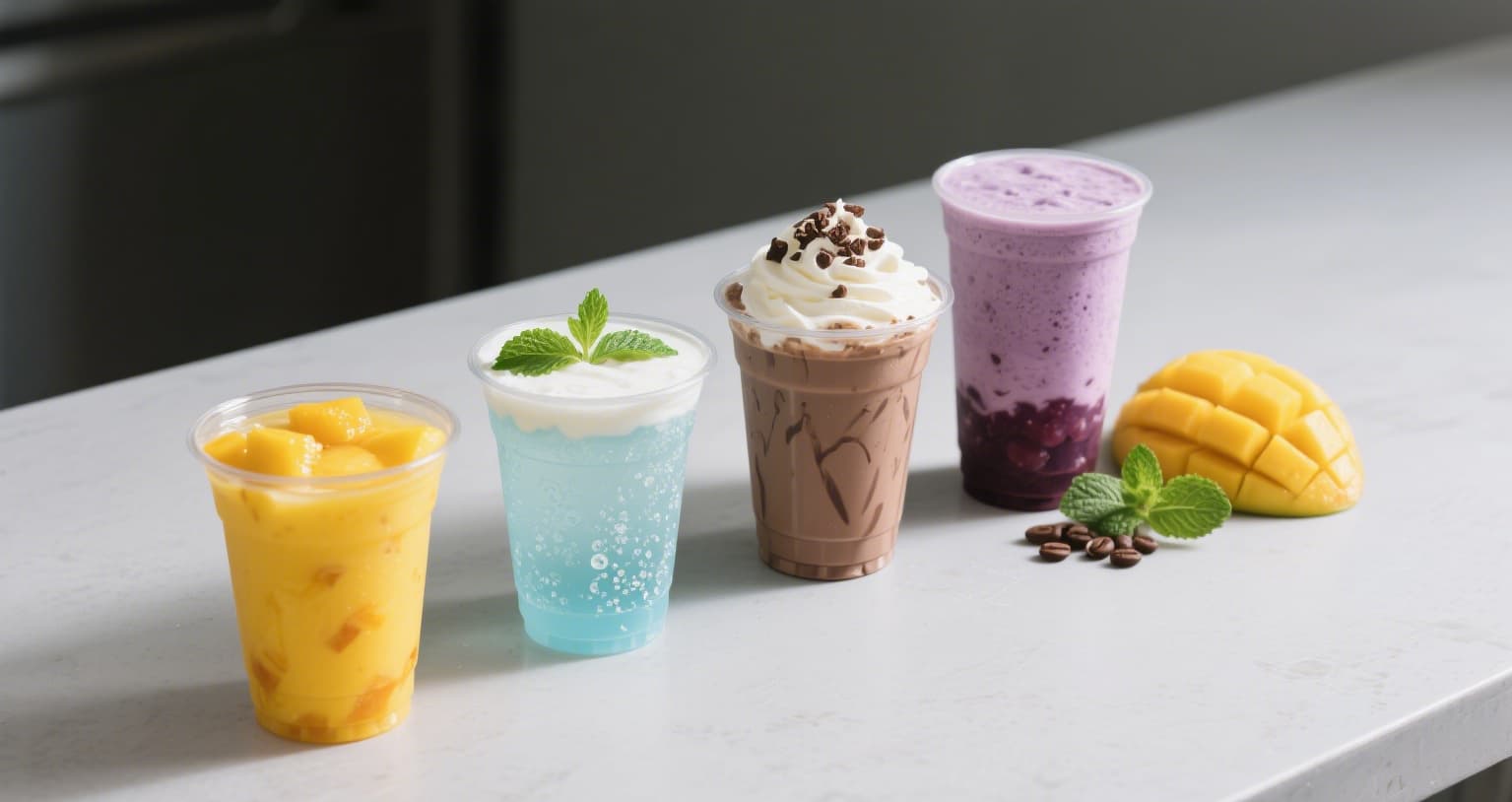Introduction
Bubble tea is booming, and the cup is no longer just a container—it’s a branding tool, quality safeguard, and sustainability driver. The right disposable cup can enhance customer experience, cut costs, and boost brand visibility. Here’s a real-world case and the latest trends shaping milk tea packaging.
Why Cups Matter in the Bubble Tea Business
Disposable cups define customer experience and operational efficiency.
✅ Product Protection – Leak-proof and hygienic for delivery.
✅ Brand Identity – A custom cup works as a mini billboard.
✅ Customer Convenience – Spill-free design ensures happy customers.
💡 Industry Insight: A Statista survey revealed that 63% of consumers consider packaging quality when choosing beverages. That means your cup directly impacts revenue and reviews.

Case Study: How TeaWave Solved Its Cup Crisis
Background:
TeaWave, a milk tea chain with 50 stores, struggled with:
- Leakage issues during delivery.
- Poor lid compatibility, slowing operations.
- Weak branding due to generic cups.
The Solution
They switched to customized PET cups and PP sealing lids from a certified supplier:
- Clear PET Cups – Showcased colorful layers and toppings.
- Precision-Fit Lids – Eliminated spills during transport.
- Logo + QR Code Printing – Enhanced brand engagement.
Results After 3 Months
✔ Complaints dropped by 85%
✔ Delivery efficiency improved by 20%
✔ Online traffic grew via QR promotions
✔ Packaging costs reduced by 15% through bulk sourcing
💬 Owner Feedback:
“Switching to the right cup transformed our operations and branding. Our customers love it—and so do our delivery partners.”
Popular Cup Materials for Milk Tea Shops
- PET (Polyethylene Terephthalate)
✅ Crystal clear, ideal for cold drinks
✅ Fully recyclable - PP (Polypropylene)
✅ Heat-resistant, perfect for sealing machines - PLA & RPET
✅ PLA: Compostable, plant-based
✅ RPET: Made from recycled PET

Cost Analysis: PET vs PP vs PLA
| Material | Avg. Cost (16oz) | Key Features |
|---|---|---|
| PET | $0.04–$0.06 | Clear, recyclable |
| PP | $0.03–$0.05 | Heat-resistant |
| PLA | $0.07–$0.10 | Compostable |
📌 Tip: PLA costs more, but brands can add a small eco premium to offset expenses while appealing to sustainability-conscious customers.
Sustainability Trends Driving Cup Choices
- 58% of Gen Z prefer brands using eco-friendly packaging.
- Regulatory shifts in the EU and U.S. target single-use plastics.
- PLA and RPET cups are gaining market share among premium brands.
🌱 Market Forecast: By 2030, 40% of beverage brands may adopt sustainable cup options as the standard.
How to Choose the Right Cup Supplier
Look for suppliers that offer:
✔ Food-grade certifications (FDA, LFGB, EN13432)
✔ Custom branding options
✔ Cup-lid compatibility testing
✔ Bulk pricing and global shipping
✅ Recommended Partner:
Xiamen Dashan Packaging – Your trusted source for PET, PP, RPET, and PLA cups, fully customizable and certified for food safety.
Marketing Advantages of Custom Cups
- Acts as free advertising in customers’ hands.
- Perfect for seasonal campaigns or limited editions.
- Adds QR codes for loyalty programs and online ordering.
FAQs
Q1: What sizes are most popular for milk tea cups?
A: 16oz (500ml) and 24oz (700ml) dominate the market.
Q2: Can PET cups handle hot drinks?
A: No. PET is for cold drinks only; PP suits hot beverages.
Q3: Are PLA cups really compostable?
A: Yes, under industrial composting conditions.
✅ Conclusion
Disposable cups are no longer just functional—they’re strategic. From enhancing branding and improving delivery performance to supporting sustainability goals, the right cup can make a big difference in a milk tea shop’s success. As consumer demand for eco-friendly solutions rises, businesses that choose the right material—whether PET, PP, or PLA—will not only comply with regulations but also strengthen customer loyalty and profitability.
Ready to upgrade your cups? Partner with Xiamen Dashan Packaging for certified, customizable, and sustainable solutions.
✅ References (International, No Chinese Competitors)
- Allied Market Research. Bubble Tea Market Size & Growth Trends. https://www.alliedmarketresearch.com
- Statista. Global Beverage Packaging Consumer Survey. https://www.statista.com
- European Commission. Directive on Single-Use Plastics. https://ec.europa.eu
- U.S. Environmental Protection Agency (EPA). Plastics Recycling and Sustainability. https://www.epa.gov
- ASTM International. Standards for Plastic Materials. https://www.astm.org
- FDA. Food Contact Materials Regulations. https://www.fda.gov
- ISO 18604:2013. Packaging and Environment — Material Recycling. https://www.iso.org
- Ellen MacArthur Foundation. The New Plastics Economy. https://ellenmacarthurfoundation.org
